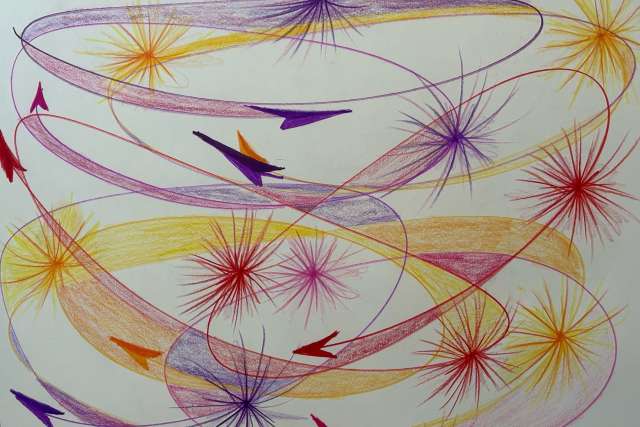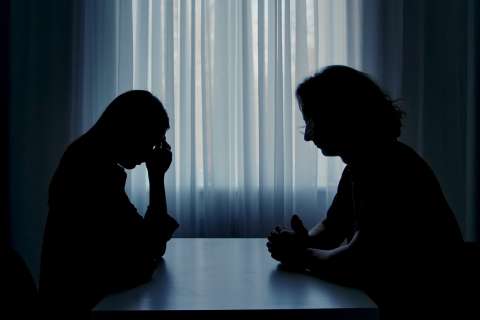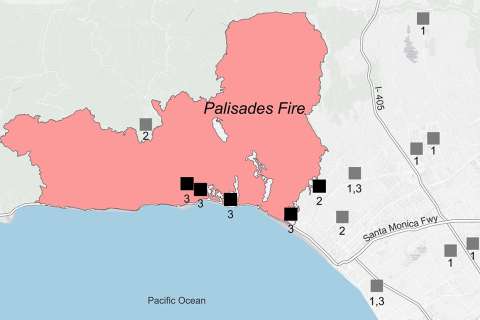The participants may have never met in person, but they’re a close-knit community who can talk about everything.
On Wednesdays they gather online, where they share stories of triumph and fear about cancer diagnoses and treatment, talk about their family happenings and favorite vacation spots, and connect over the mundane, marvelous and mind-boggling experiences of life as they paint, draw, sketch or color.
The Healing Through Art therapy program offered through the Simms/Mann-UCLA Center for Integrative Oncology is not an art class. No instruction is provided regarding artistic methods or techniques. Instead, the art here “provides a medium to communicate some of the most difficult emotions and experiences in the cancer treatment journey,” says Paige Asawa, PhD, the board-certified art therapist who leads the group.
The 90-minute sessions begin with a check-in drawing, where participants take 10 minutes to draw or paint whatever’s on their mind. That’s followed by what Dr. Asawa calls “gallery time,” when each member of the group shows what they’ve created and shares a bit behind the work — perhaps what inspired it or what feelings it evokes.
Catalyst for conversation
This inevitably leads to vibrant exchanges, during which the participants share their thoughts about whatever challenge or joy they’re facing. They connect over common themes, either in the cancer journey or in life in general. They listen to and support each other, the artwork serving as a catalyst for the conversation.
“I’m just sort of amazed at the stuff that just comes out of you. You have this freedom to open up,” says Katy Kearny, who has participated in the group for almost a year. “This group broke down my walls. I tell them things I don’t tell my husband, and we’ve been together for 45 years; things I don’t tell friends I’ve known for 30, 40, 50 years. There’s just things I keep private — especially my emotions. But this group — it was like somebody stuck an old, rusty key in an old, rusty lock and opened up the door.”
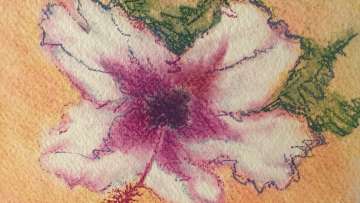
During a recent session, Kearny sketched a hibiscus flower as the check-in drawing and told a story about how the flower reminded her of an exchange between her daughter and her sister, from whom she’d been estranged for 20 years.
Another participant shared an image of a bird. She talked about sleeplessness and how soothing it was for her to picture a bird soaring through the sky, looking at nature.
There was a picture of a palm-tree lined beach, a watercolor of an ocean scene and an abstract, colored-pencil drawing of swirling, elliptical shapes that almost looked like leaves.
It’s not about the quality of the artwork, says participant Marlene Hajdu, but the emotions of the artist.
“It’s a place to open up and say whatever you need to say,” she says.
Processing emotions through art is different than talking things through in traditional therapy, says participant Jill Bonilla.
“When you draw and do art, you’re going into a calmer state, and so your intuition has to guide your pen,” she says. “Your subconscious really does talk to you through the art. Your brain is processing it differently. So I think that’s a huge difference between art therapy and regular therapy.”
Art therapy “engages the mind, body, and spirit in ways that are distinct from verbal articulation alone,” according to the American Art Therapy Association. It’s used to cultivate emotional insight, foster self-awareness and enhance social skills.
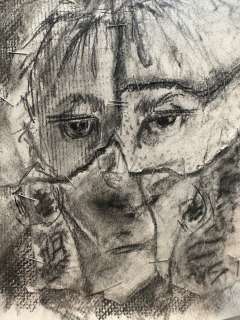
Bonding through art also builds intimacy among group members, which was evident to a visitor after witnessing just part of a session. There’s a palpable closeness and camaraderie among participants, even though the composition of the group changes week to week. Newcomers are immediately welcomed into the fold.
“I’ve never seen these ladies (in person),” Bonilla says. “But I know if I ever saw one of them, I would give them a big hug.”
Healing Through Art is one of many support groups offered through the Simms/Mann Center.

